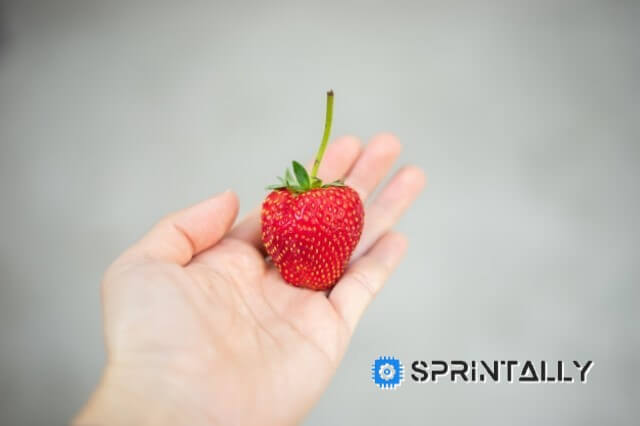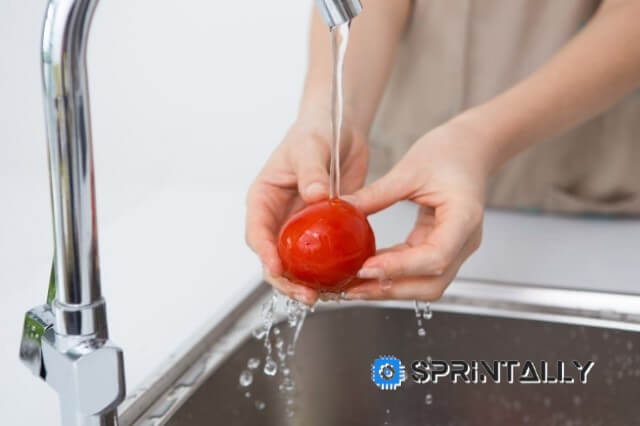Scientists have compiled a list of dangerous fruits and vegetables

The benefits of fruits and vegetables can easily block the harm from the chemistry that they contain. In violation of the rules for the protection and feeding of plants, in addition to useful trace elements, vegetables and fruits accumulate pesticides.
Each year, the Environmental Working Group (EWG) issues a list called DirtyDozen, which includes 12 inorganic fruits and vegetables with the highest levels of pesticide residues. This article lists the products that were listed last year.
Dirty Dozen

According to the EWG, the following fruits and vegetables have the highest levels of pesticide residues:
- Strawberry: strawberry invariably heads the list of the Dirty Dozen. In 2018, the EWG found that one-third of all samples of strawberries contains ten or more pesticide residues.
- Spinach: 97% of the spinach samples contained pesticide residues, including permethrin, a neurotoxic insecticide, which is very dangerous for animals.
- Nectarines: EWG found harmful remains almost 94% of the samples of peaches, and one sample contained more than 15 different types of pesticides.
- Apples: EWG found pesticide residues in 90% of samples of apples. Moreover, 80% of apples tested contained traces of diphenylamine, a pesticide banned in Europe.
- Grapes: more than 96% of the samples tested positive for pesticide residues.
- Peaches: more than 99% of peaches tested by EWG contained on average four pesticide residues.
- Cherry: EWG found an average of five pesticide residues in samples of cherry, including pesticide called iprodione, which is banned in Europe.
- Pear more than 50% pears, EWG tested contained residues of five or more pesticides.
- Tomatoes four pesticide residues were found in traditionally grown tomatoes. One sample contained more than 15 different pesticide residues.
- Celery: pesticide residues were detected in more than 95% of celery samples. It was revealed 13 different pesticides.
- Potatoes: samples of potatoes contained more pesticide residues, by weight than any other tested crop. Chlorpropham made up the bulk of the detected pesticides.
- Bell pepper: contains less pesticide residues than other fruits and vegetables. However, the EWG warns that the pesticides used for growing bell peppers are usually more toxic to human health.
In addition to the traditional list of the Dirty Dozen, EWG releases a list of the Dirty Dozen Plus, which contains 36 fruits and vegetables with a high content of pesticide residues, including hot peppers, tomatoes, peas and blueberries.
How to reduce the risk of pesticide exposure?

Below are simple but safe and effective methods that you can use to reduce pesticide residues in foods:
- Coldwater. Rinse fruits and vegetables in cold water and brushing with a soft brush can remove pesticide residues.
- Water with soda. The study found that washing apples 1% strength mixture of baking soda and water for more effective removal of pesticide residues than just tap water.
- Remove the rind. Remove the peel from fruits and vegetables of "Dirty dozen" can significantly reduce consumption of pesticide residues from food.
- The blanching. In one study, blanching of the product (dip it in boiling and then cooled water) led to lower levels of pesticide residues more than 50% in all samples of vegetables and fruits, except peaches.
- Cooking. The study found that cooking strawberries significantly reduced the residual quantities of pesticides.
- Ozonated water. It was found that ozonated water (water mixed with oxygen, called ozone) is especially effective for the removal of pesticide residues from food.
While the effect of pesticides on health is not yet fully understood, the health benefits of consuming fruits and vegetables have been proven for a long time, so you should not limit yourself. For those who do not want to take risks, it is best to purchase organic analogs of the products presented in the Dirty Dozen list.





